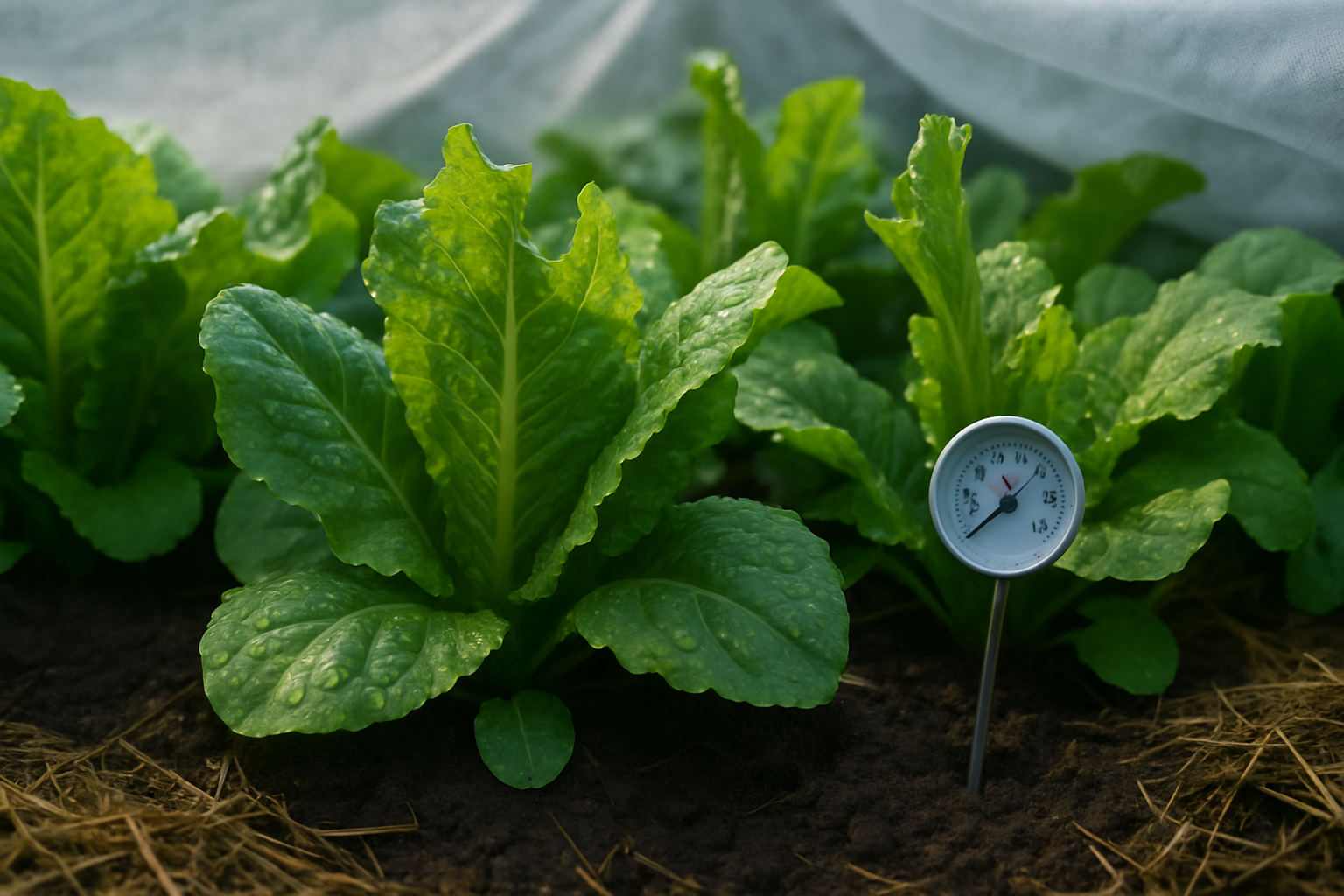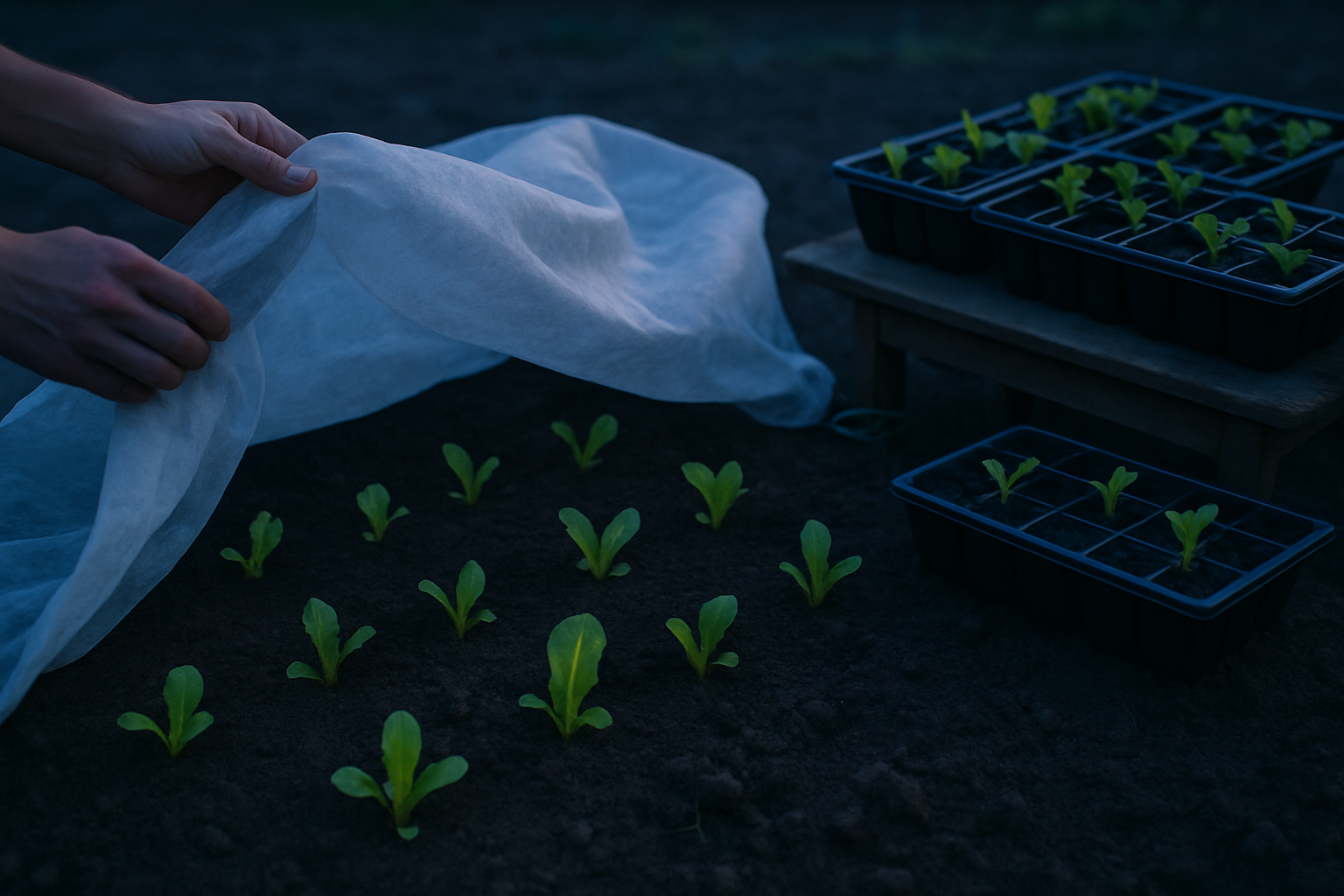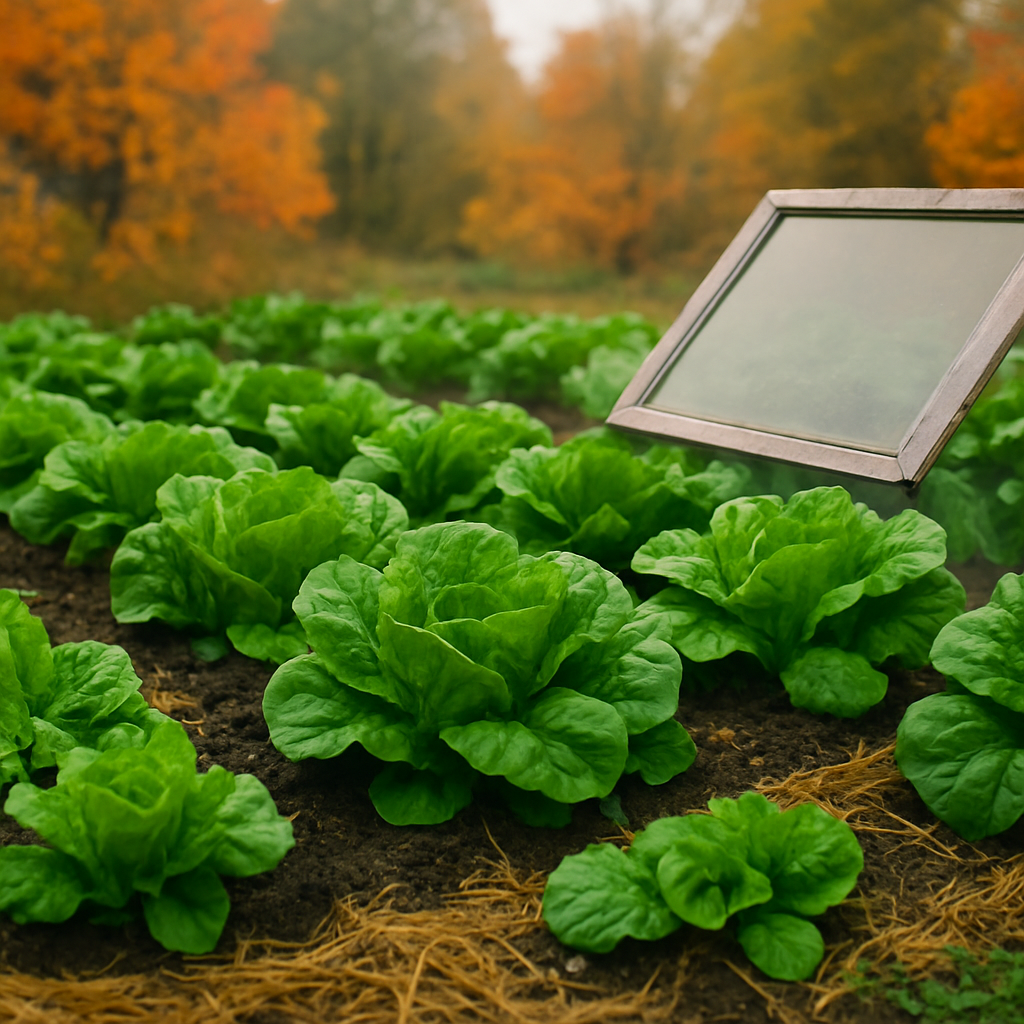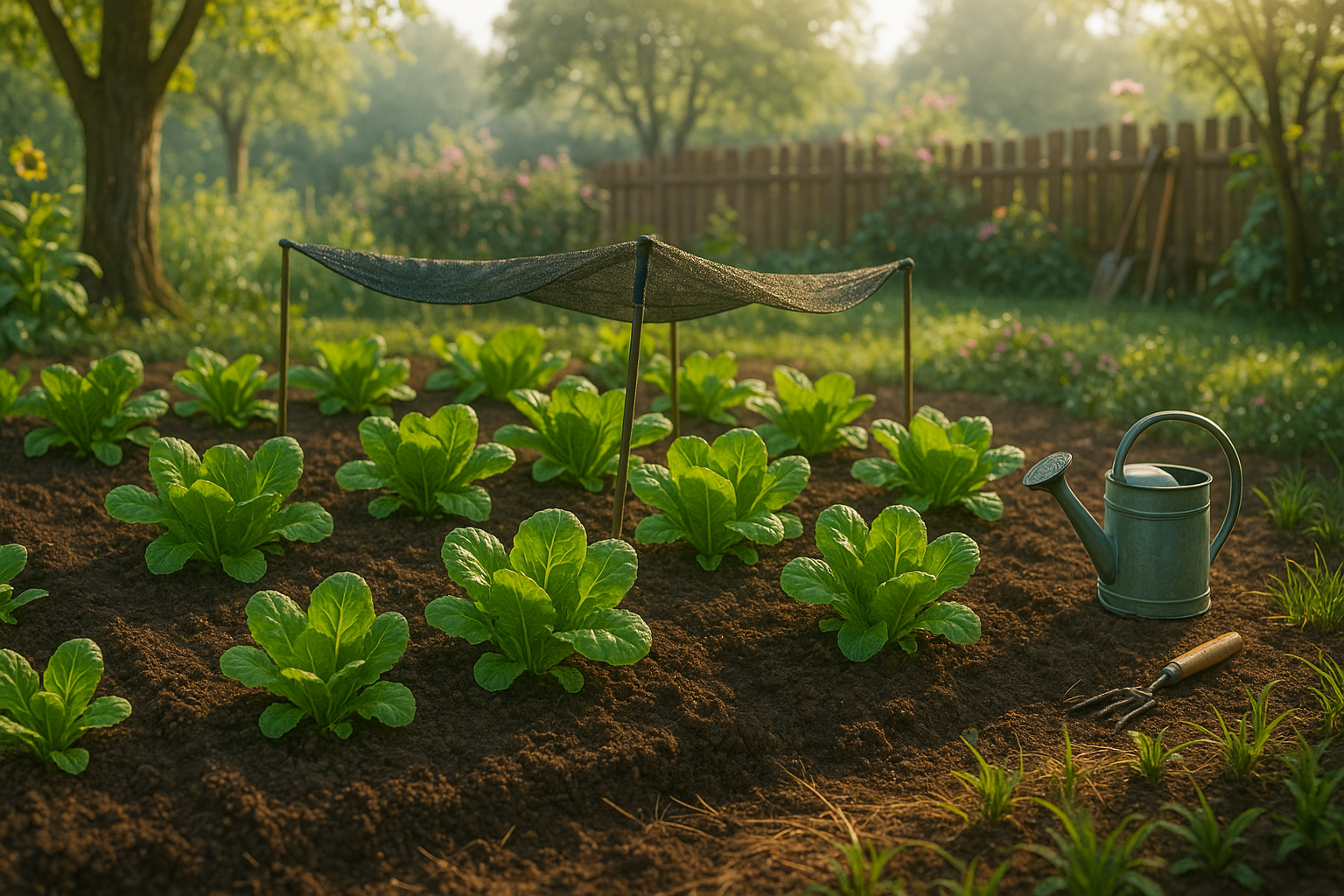Lettuce Planting: Timing for Optimal Growth
Lettuce is a staple in many home gardens thanks to its quick growth, mild flavor, and versatility in salads and sandwiches. As a cool-season crop, lettuce thrives in mild temperatures, making the timing of planting crucial to ensure healthy, crisp leaves.
Planting in early spring lets you take advantage of cooler weather before summer heat sets in, while late summer or early fall planting can extend your harvest into cooler months when many other crops are fading. Understanding the right time to plant isn’t just about maximizing yield; it also helps prevent common issues like bolting, bitterness, and pest pressure, which tend to increase as temperatures rise.
Throughout this article, we’ll break down the best planting windows for spring, summer, and fall, along with region-specific advice, tips for succession planting, and how to select lettuce varieties for different seasons. Whether you’re aiming for continuous salads or just a couple of heads, mastering the timing of your lettuce planting can make a big difference in both quality and quantity.
Lettuce Thrives in Cool Weather

Temperature is a key factor for successful lettuce germination and growth. The ideal temperature range for germinating lettuce seeds is between 55°F and 70°F (13°C to 21°C), while seeds may fail to sprout in heat above 80°F (27°C). Once established, lettuce grows best with daytime temperatures between 60°F and 70°F (15°C to 21°C), though some heat-tolerant varieties can handle slightly warmer conditions.
Because lettuce matures quickly and doesn’t tolerate summer heat, most gardeners plant it in early spring or late summer to take advantage of cooler weather. Daylight length also plays a role—lettuce prefers about 10 to 12 hours of daylight and can bolt (go to seed prematurely) as days get longer and temperatures rise. For this reason, keep an eye on local weather forecasts and daylight patterns, aiming to plant during a window that avoids peak summer heat.
Soil Requirements
Lettuce demands loose, fertile soil rich in organic matter, with a pH between 6.0 and 7.0 for optimal nutrient uptake. Well-draining soil is essential, as soggy roots can lead to disease. Before sowing, amend your soil with compost and remove any stones or debris to help roots spread easily.
Sunlight Needs
While lettuce loves sunlight and generally benefits from 6–8 hours of sun per day, in hotter climates, a little afternoon shade can prevent leaves from turning bitter or wilting.
By combining the right temperature, daylight, and soil conditions, you’ll give your lettuce the healthiest possible start and enjoy tender, crisp harvests.
Lettuce Thrives in Cool, Mild Weather
Early spring is the perfect time to start growing lettuce. For indoor sowing, begin lettuce seeds about 4-6 weeks before your area’s last expected frost. Fill seed trays with a light, moist potting mix and gently press seeds onto the surface—they need light to germinate, so avoid burying them too deeply. Place trays on a sunny windowsill or under grow lights, keeping the soil moist but not soggy.
Once seedlings have two or three true leaves and the outdoor soil is workable (usually 2-4 weeks before the frost-free date), start hardening them off by setting them outside for a few hours each day, gradually increasing their exposure.
Direct Outdoor Sowing

Plant seeds as soon as the ground is workable. Lettuce’s natural frost tolerance allows seedlings to survive a light frost, though a sudden hard freeze can damage young plants. To protect against late cold snaps, cover seedlings overnight with row covers or lightweight frost blankets—these help retain heat and reduce risk.
Succession Sowing for a Continuous Harvest
For a steady harvest throughout spring, practice succession sowing by planting a new row of seeds every two weeks. This ensures you always have lettuce at various stages of growth.
Preventing Bolting as Temperatures Rise
As temperatures climb toward late spring, lettuce is more prone to bolting (early flowering). Use shade cloth or plant lettuce in areas with afternoon shade to keep it cool and extend your harvest.
By paying attention to soil temperature, monitoring the weather closely, and using simple tools like covers or shade cloths, you can transform a single harvest into salads all season long. With just a few mindful steps, your spring garden can provide a continuous bounty of crisp, homegrown lettuce.
“`
Planting Lettuce in the Heat of Summer

Planting lettuce in the heat of summer can be tricky due to its natural sensitivity to high temperatures. Warm weather speeds up bolting—a process where the lettuce sends up a flower stalk and leaves turn bitter—which quickly shortens harvest time.
To boost your chances of a successful crop, choose heat-tolerant lettuce varieties like Buttercrunch, Summer Bibb, Red Sails, or Jericho, which are bred to withstand summer stresses.
Timing is also crucial: try sowing seeds either in early morning or later in the evening to avoid the harsh afternoon sun, and consider starting transplants indoors before moving them outside once the worst heat subsides. One simple trick is to stagger your planting every two weeks, ensuring a continuous harvest even if some batches struggle.
When it comes to protection, providing shade can make a world of difference. Use row covers, garden fabric, or even a simple umbrella to shield young plants from direct sunlight during the hottest part of the day. Adding a thick layer of mulch—such as straw, grass clippings, or shredded leaves—helps keep soil temperatures cooler and conserves moisture.
Most importantly, lettuce has shallow roots, so consistent watering is essential; water early in the morning to minimize evaporation and reduce heat stress. A drip irrigation system or soaker hose makes it easier to maintain the even moisture lettuce loves and helps prevent diseases caused by wet foliage.
With attention to timing, the right varieties, and a bit of care, you can enjoy crisp, flavorful lettuce throughout the summer months, even when temperatures climb.
Planting Lettuce for a Fall Harvest

Planting lettuce for a fall harvest is a smart way to extend your fresh salads well past summer. To get the timing right, check your local first frost date—usually, you’ll want to sow seeds 8 to 10 weeks before that date, since lettuce thrives in the cool but not freezing temperatures of early autumn.
For most regions, that means planting in late summer to early fall, once soil temperatures dip below 80°F for good germination. Fall lettuce does grow slower than spring crops because of shorter days and cooler nights, but that’s actually a bonus: slower growth allows for deeper roots and sweeter, crisper leaves, as lower temperatures reduce the bitterness that sometimes plagues summer greens.
Still, fall weather can be unpredictable—early frosts or heatwaves might surprise you, so be prepared with row covers. Row covers not only shield young plants from surprise frosts but also provide a little warmth during chilly nights and help deter late-season pests.
For serious cold, a simple cold frame—a clear cover over a raised bed or even an old window propped on bricks—can keep lettuce going into early winter, allowing you to harvest fresh greens long after most garden beds are bare. If you stagger your planting every 10 to 14 days, you can ensure a continuous supply of tender leaves.
Remember to keep the soil moist, mulch to retain warmth, and harvest outer leaves as needed so plants keep producing. With the right timing and a little protection, fall lettuce planting can reward you with sweet, crunchy salads straight from your garden deep into the season.
Caring for Lettuce Throughout the Year
Caring for lettuce throughout the year means adapting your approach as the seasons shift, but a few foundational practices remain essential for healthy, flavorful greens.
Start with steady watering—lettuce has shallow roots and thrives with consistent moisture, so aim to keep the soil evenly moist without letting it get waterlogged. Early on, thin seedlings so each plant has adequate space to grow, which helps prevent disease and encourages stronger heads or leaves, depending on the variety.
A balanced, slow-release fertilizer early in the growing cycle will boost leafy growth, but avoid high-nitrogen feeds later on, as they can lead to bitter leaves.
Seasonally, spring and fall usually offer ideal growing conditions due to cooler temperatures; in these months, be vigilant for slugs or aphids that might appear in wetter conditions, and use row covers for cold snaps.
In the heat of summer, lettuce can bolt or turn bitter, so provide shade in the afternoon and water more frequently to keep roots cool.
Powdery mildew and leaf rot are most problematic when humidity is high, so leave plenty of space between plants and pick off any yellowing leaves.
For harvesting:
- Pick loose-leaf varieties by snipping the outer leaves regularly, allowing the center to keep producing.
- Heading varieties should be harvested in the early morning while still crisp and before temperatures rise.
- In spring, harvest just before the heat, and in fall, gather heads as soon as a frost threatens for the sweetest flavor.
Regular checks and small adjustments throughout the year ensure a fresh, plentiful lettuce supply in every season.
Dealing with Common Issues in Leafy Greens Gardening
Dealing with issues like bolting, bitter leaves, pests, or poor germination is part of every gardener’s journey, especially with leafy greens. If your plants bolt (suddenly shoot up flowers and seeds), it’s likely due to heat or inconsistent watering—try planting bolt-resistant varieties or provide some afternoon shade.
Bitter leaves often result from stress, hot weather, or not harvesting early enough—pick leaves when they are younger and water evenly. Cooler months usually yield the sweetest greens.
Common pests, such as aphids or caterpillars, can be managed with regular inspections, hand-picking, and natural remedies like neem oil.
Poor germination usually links back to soil temperature. Lettuce, for example, prefers cooler soils (45-65°F), while spinach may not sprout in hot midsummer beds.
Each region varies: what thrives in a northern spring may struggle in a southern fall, so experiment with timing and jot down your results. Don’t get discouraged by setbacks; use them as clues for your next planting.
Ultimately, gardening is as much about learning your microclimate as it is about the plants—so keep trying, tweaking, and observing for the best results!
